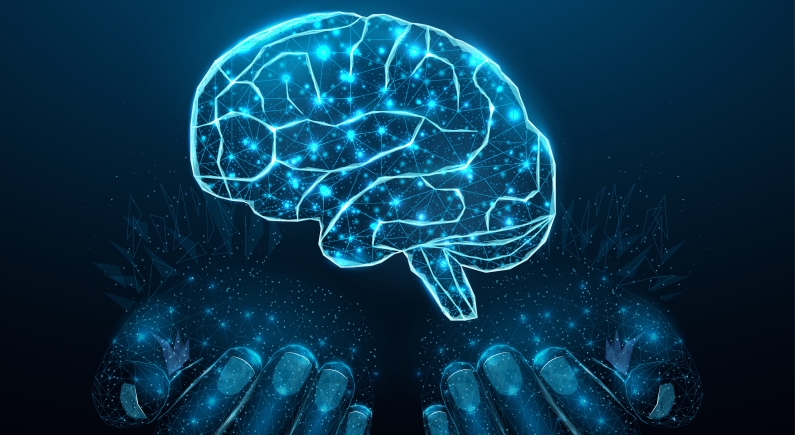Brain-mimicking devices run AI tasks at 1/800th power consumption

Neural network technology is accelerating, as hardware that mimics neuron-connecting tissue copies brain functions such as learning and decision making. Memristive devices which mimic neuron synapses could be the next big leap for AI. Two fresh (and admittedly quite technical) studies could help solve major hurdles neural components face by finding use-cases beyond neural networks.
Memristors, or memory resistors, are switches that remember which electric state they were in prior to being turned off. Scientists aim to use memristors to build electronic neurons which can both compute and store data. These devices could also greatly increase energy efficiency over conventional microchips which inefficiently transport data back and forth between processors and memory in traditional computers.
Brain-inspired neural hardware could also find usage in analysing medical data sets and scans or empower autonomous vehicles beyond their current capabilities.
Increase energy efficiency for silicon synapses
Still, current devices rely on emerging tech which are somewhat unreliable. To overcome these challenges, Israeli and Chinese researchers created memristive devices also known as silicon synapses. These synapses boasted a 100% yield with 170 to 350-fold greater energy efficiency than an Nvidia Tesla V100 graphics processing unit when it came to the most basic neural network operation.
The scientist used so-called ‘floating-gate’ transistor technology used in commercial flash memory. These new components had two terminals instead of the typical three, greatly streamlining part fabrication and throughput. The simplicity of the technology also eliminated the need for energy intensive operations like digital-to-analog conversions, per the senior author Shahar Kvatinsky, an associate professor of electrical and computer engineering at the Technion−Israel Institute of Technology in Haifa.
While it’s easy to get lost in the technical jargon, the long-and short of it is that these high-endurance devices showed a marked improvement in energy usage. The memristors operated past over 100,000 cycles of programming and erasing using ‘voltage pulses’, and are expected to hold data for over ten years.
Memristors demonstrate predictive capabilities
Using an array of about 150 of these components, researchers created a neural network that worked on binary signals. Subsequent experiments revealed the network could recognise handwritten numbers with 97% accuracy. According to Kvatinsky, this work “is just a start—a proof-of-concept and not a whole integrated chip or a large neural network. Integration and scaling up is a major challenge.”
Meanwhile, a French research team investigated memristors for a ‘Bayesian reasoning’ – a standard statistical computing technique. The technique involves processing prior knowledge to compute decision making under risk. While the results are explainable, co-author and research scientist at CNRS, Université Paris-Saclay Damien Querlioz said “it is just not obvious how to compute Bayesian reasoning with memristors.”
According to scientist Melika Payvand from the neuroinformatics Institute in Zurich, implementing Bayesian reasoning using conventional electronics requires complex memory patterns, “which increase exponentially with the number of observations”. The scientist acknowledged that the French researchers, “found a way of simplifying this”.
Low-energy consumption AI
The Bayesian equations were rewritten so a memristor array could conduct a statistical analysis known as ‘stochastic computing’. This approach generated random streams of bits every second, which were often zeroes, but sometimes ones. The proportion of zeros to ones encoded the probabilities needed for the statistical calculations performed by the memristor array. This digital strategy uses simple circuitry compared to other methods, all of which reduces the system’s size and energy demands.
Researchers created a circuit which incorporated 2,048 silicon memristors on top of 30,080 CMOS transistors on the same chip. This setup allowed the circuit to recognise a person’s handwritten signature from signals beamed from a wrist-worn device.
In academic circles, Bayesian reasoning is often thought of as computationally intensive and expensive. However, with this new type of circuitry, handwriting recognition was completed using 1/800th to 1/5,000th the energy of a conventional computer processor. This boils down to a potentially major breakthrough in “low-energy consumption artificial intelligence,” per Querlioz.
Since the device can turn on and off instantly, it only needs to work when needed – thereby conserving power. Additionally, the memristor is resilient to errors and random events, which could prove useful in dangerous environments, said the researchers.
Overall, the new circuit “excels in safety-critical situations, where high uncertainty is present, little data is available, and explainable decisions are required,” said Querlioz. “Examples are medical sensors, or circuits for monitoring the safety of industrial facilities.”
To reduce errors even further, researchers posit that such circuits might include machines that collect multiple types of sensory data, which could include autonomous cars or drones. If prediction confidence is low, then another data point could boost confidence by analysing data from a different sense, noted Payvand.
One obstacle faced by Bayesian systems is their “scalability to larger problems or networks,” Payvand warns. The researchers conclude that current prototypes must be adaptable for more diverse use-cases in the future.
Both studies employed randomness in different ways; one for statistical analysis and the other for avoiding errors during data sampling. When you put it all together, synthetic neural network technology is generating more for less. With higher energy efficiency, more throughput and less errors, real world commercial applications for memristive devices are bound to become bigger, better and bolder.
Have you read our previous article: Will the EU ban Bitcoin in the future?







